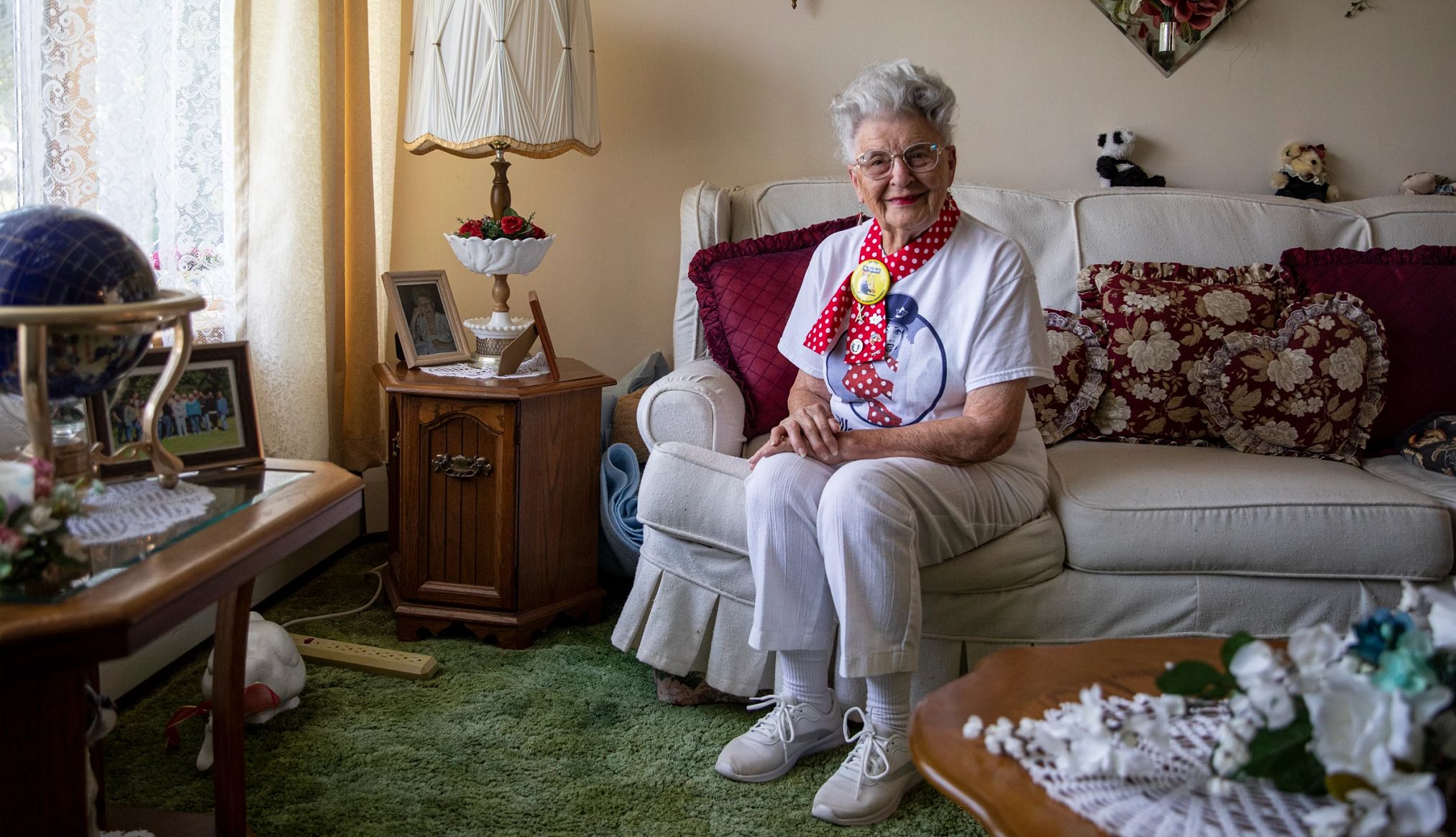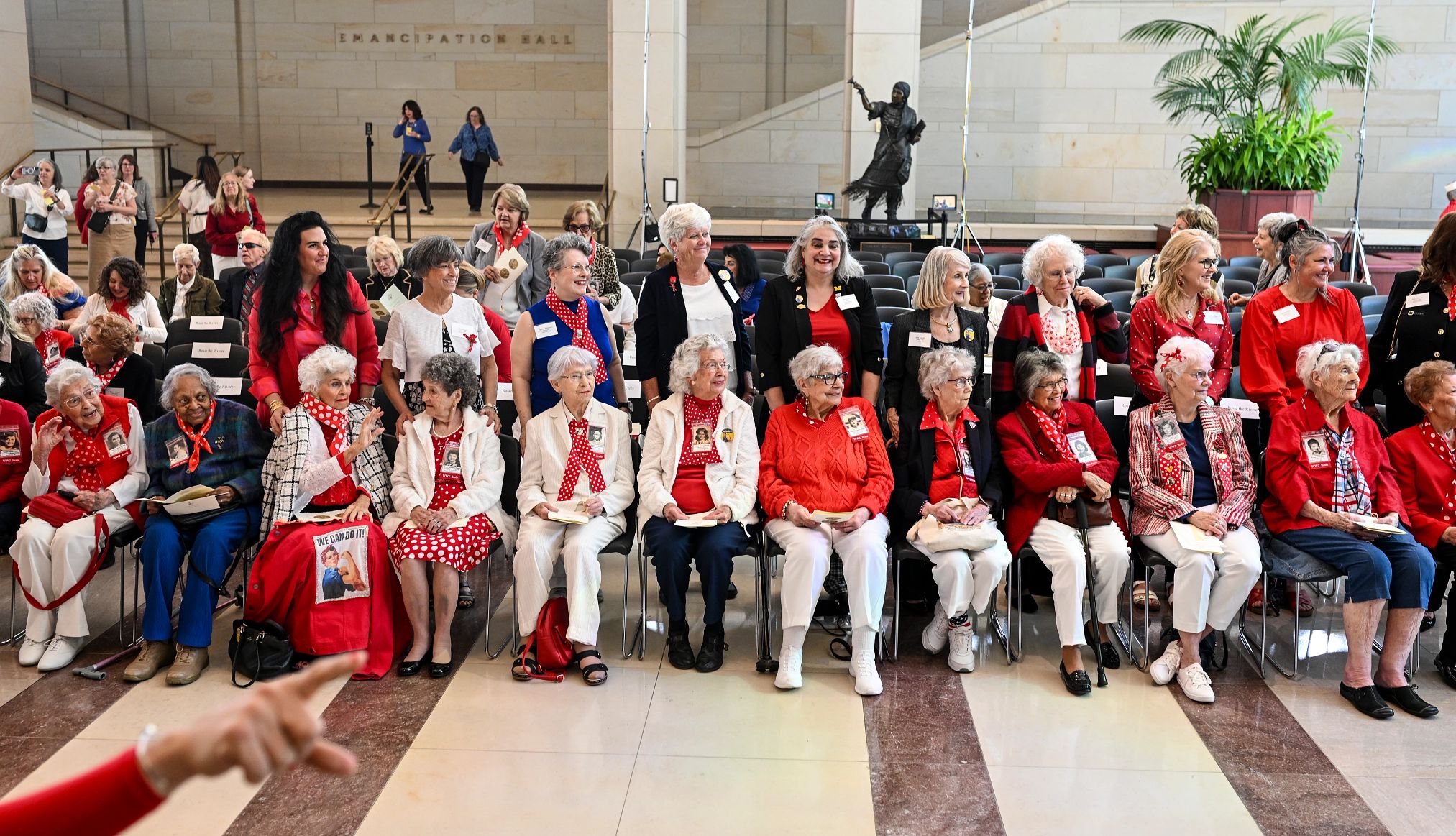AARP Hearing Center


At 98, Mae Krier continues to pull up her sleeves to work. As one of the original Rosie the Riveters, she’s been a powerful advocate for recognizing the millions of American women who built aircraft, ships, vehicles, weaponry and ammunition vital to the U.S.-Allied victory during WWII.
“My dream was to get the American women recognized after WWII,” Krier says. “The men came home to flying flags and parades. And when I came home with a pink slip, it just wasn’t fair. Because the men will tell you, they couldn’t win the war without us.”
Though she doesn’t recall the exact year she began her campaign for recognition, Krier remembers that she picked up her pen and “started writing everywhere.” For decades she’s collaborated with other “Rosies,” pushing for more awareness of their contributions.
Watch for Krier on July 4, when she and others from the greatest generation will take the stage during A Capitol Fourth in Washington, D.C. The live concert airs at 8 p.m. ET on PBS.
In 2020, the Department of Labor inducted the Rosies into its Hall of Honor, saying some 6 million women held war-industry jobs during WWII.
In April of this year, Krier accepted the Congressional Gold Medal bestowed collectively on the dwindling ranks of Rosies. She says that while she was “elated” to receive the recognition, “that journey getting there, you can’t put a price on that journey — all the wonderful people I met.”
More tributes came in June, when she represented the trailblazing Rosies on a trip to Normandy, France, commemorating the 80th anniversary of D-Day.


“While in Normandy, the first day everything was about the men and the storming of the beaches. Not once did they mention that the equipment they were using was built by women,” Krier tells AARP. “Why do we have to keep reminding them that had it not been for women, we may not have won the war?”
Krier’s path to becoming a Rosie
Krier, who lives in Bucks County, Pennsylvania, says she’ll never forget December 7, 1941 — the attack on Pearl Harbor. Just days later, Hitler declared war on the U.S. And about a year and a half later, Krier joined the ranks of her fellow women to serve in the war effort. It was her first real job.
In 1943, at just 17 years old, too young to vote and nearly 1,300 miles from her home in North Dakota, she became a riveter. Her job: assembling B-17 bombers, the so-called Flying Fortresses, for Boeing in Seattle. With a badge restricting her to specific parts of the plant, she was handed an air-powered rivet gun and underwent two weeks of training.







































































You Might Also Like
How the Medal of Honor Changed My Life
The story behind ‘the real Forrest Gump,’ veteran Sammy Lee DavisDon McLean on the Day His Life Changed
How a place crash on February 3, 1959, affected the musician’s lifeVeterans Share Their Haunting War Stories
Documentary by AARP Studios features critical battles in American warfare, told by soldiers sharing their patriotism, brotherhood
Recommended for You